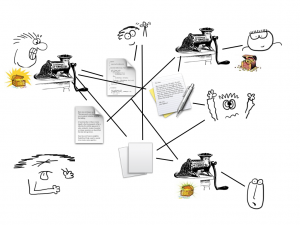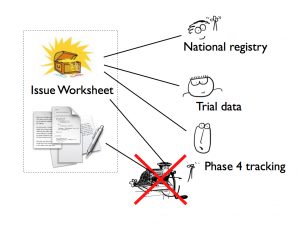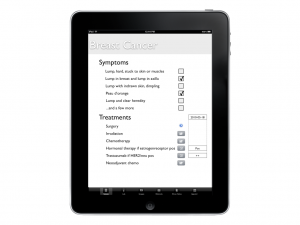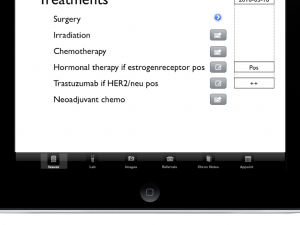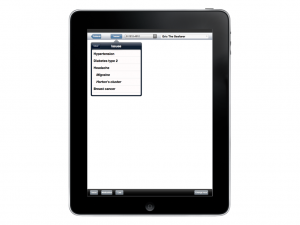Ah, finally we arrive at solutions. The first in the series is the elephant in the room: issues.
Why do I say “elephant in the room”? Because when a doctor examines and treats a patient, he thinks in “issues”, and the result of that thinking manifests itself in planning, tests, therapies, and follow-up. When he records the encounter, he records only planning, tests, therapies, and follow-up, but not the main entity, the “issue” since there is no place for it. The next doctor that sees the patient needs to read about the planning, tests, therapies, and follow-up and then mentally reverse-engineer the process to arrive at which issue is ongoing. Again, he manages the patient according to that issue, then records everything but the issue itself.
Other actors such as national registers, extraction of epidemiological data, and all the others, all go through the same process. They all have their own methods of churning through planning, tests, therapies, and follow-up, to reverse-engineer the data in order to arrive at what the issue is, only to discard it again.
This is what I mean by the “elephant in the room”. The problem is so pervasive, so obvious, so large, that it is incomprehensible to me how this situation ever came about and why it is so difficult to convince our IT providers about the need for this entity in our systems, and the huge range of problems that its introduction would solve. Doctors in general don’t see it either, but at least they are almost to a man (and woman) extremely easy to convince. And once they see the problem and the solution, it’s as obvious to them as it is to me. This is how it looks today with all different actors trying to make sense of a highly deficient EHR (the images are taken from a presentation, and I think you may get an idea of the meaning even without my sweet voice explaining what you see):
So, after that harangue, this is my message: we need the “issue” concept in our medical systems. If the issue concept is present in the EHR, there is no need for every doctor and every actor to keep reconstructing it from derived and deficient data. It’s very easy to adapt the issue templates to cover all the needs of the different actors, simply because it turns out they are all after more or less the same thing. This only becomes obvious once you see it from the perspective of “issues”.
If we look at what exactly an “issue” consists of, we see that it is an ICD-10 code, or an ICD-10 code range, that defines the symptom or disease as such. Further, it contains a clinical guidline on how to diagnose and treat the disease, or how to further investigate it and refine the diagnosis, including differential diagnoses. It would entirely replace the usual medical records in daily use and it would best be presented on a touch operated slate device such as the iPad, simply because following links, making choices, and looking up information will be much more important than entering text. The text entry part will still be possible, but will be more of an exception than a rule.
Naturally, even though you will work with “issues” instead of regular medical records, the medical records are still produced in the background, and preexisting records are both viewable and linkable through the same interface. If you look at the bottom of my little mock-up, you’ll see tabs that bring you to the old medication list, chronological records (old style EHR), referrals, lab, etc. But in general, you’ll be working in the “issue worksheet” for most of the time, only occasionally looking up information through the other tabs.
To emphasize the radical difference between this way of working and the old EHR way of working, I made a simple mockup of the entry screen for a patient record. All you see is the patient’s name and a list of issues, some of which are subissues, or differential diagnoses that haven’t been resolved yet. For an entry screen, that is actually all we need.
You may notice that “Eric the Seafarer” had breast cancer according to this screen, which is very unusual in men. But vikings were a strange and wonderful people, so I would not jump to conclusions about that.
Oh, better late than never: click on any image for a larger resolution.

